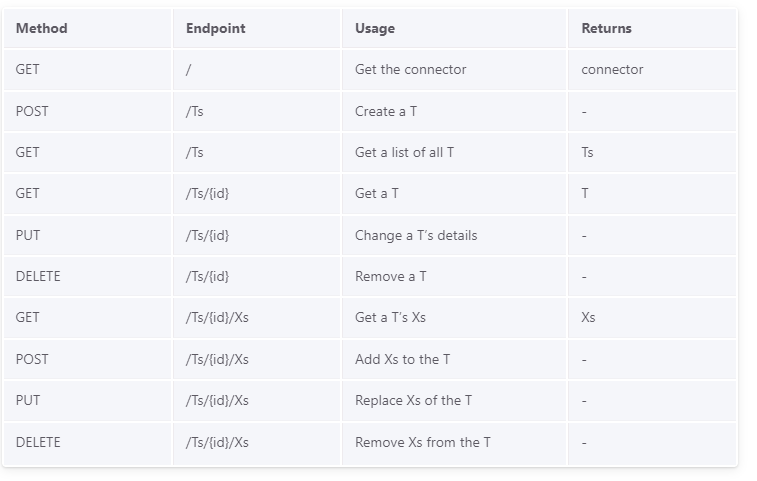
IDENTITY MANAGEMENT
Proprietary customized OpenID Connect compatible solution is used for identity management, which supports integration with 3rd party Identity providers with OpenID protocol.

CONSENT MANAGEMENT PLATFORM
Custom web platform for data owners and data users, where they can manage consents and requests for sharing data, which is developed by ITC.
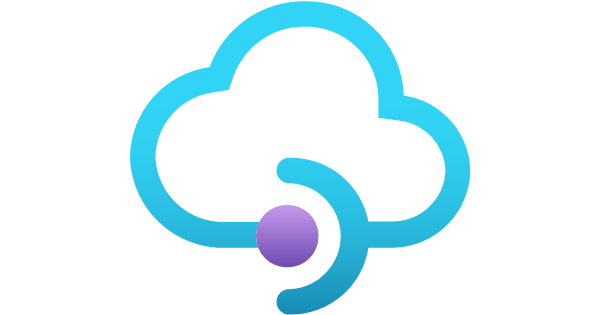
API MARKET SERVICE
API management service, where data users can see the documentation for available datasets and their respective APIs. Data will be shared with REST API, and data will be provided in json format. Authentication is basic HTTP authentication (API key).
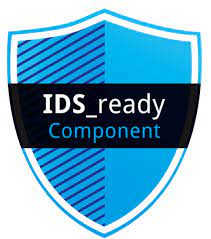
DIH AGRIFOOD IDSA CONNECTOR
The International Data Spaces network is constituted by the total of its IDS Connectors. Each IDSA Connector allows the exchange of data via the Data Endpoints it exposes. An IDS Connector must be reachable by IDS connectors from other organisations. It should be possible to reach an IDS Connector using the standard Internet Protocol (IP) and to operate it in any appropriate environment.
IDSA compliant part of the technical infrastructure is in development stage and is not yet ready for production use.
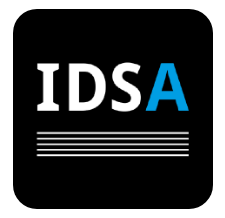
BROKER
The IDS Metadata Broker is an IDS Connector that contains an endpoint for registering, publishing, maintaining, and query Self-Descriptions. A Self-Description encapsulates information about IDS Connector itself and its capabilities and characteristics. This Self-Description contains information about the offered interfaces, the owner of the component and the metadata of the data offered by the component. A Self-Description is provided by the operator of the Connector. The Self-Description in total can be seen as metadata.
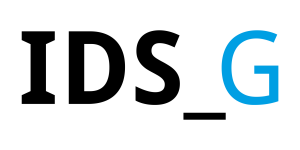
CLEARING HOUSE
The IDS Clearing House consists of an IDS Connector and bases all its functions on a logging service that records information relevant to clearing, billing, and usage control.
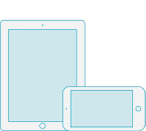
VOCABULARY HUB
Vocabulary hub is a service that provides a platform to host, maintain, publish, and document the vocabularies of the data shared in the DADS. The IDSA Information Model is the lowest common denominator of all vocabularies in the DADS.
Description
This section explains the work made in collaboration with the pilot KGSZ to understand own Dataspace and the work to enable the data exchange.
DADS (DIH AGRIFOOD Data Space) is in development, so a description of functional building blocks may change in the future. In figure bellow, there is a schematics view of functional building blocks and data flow:
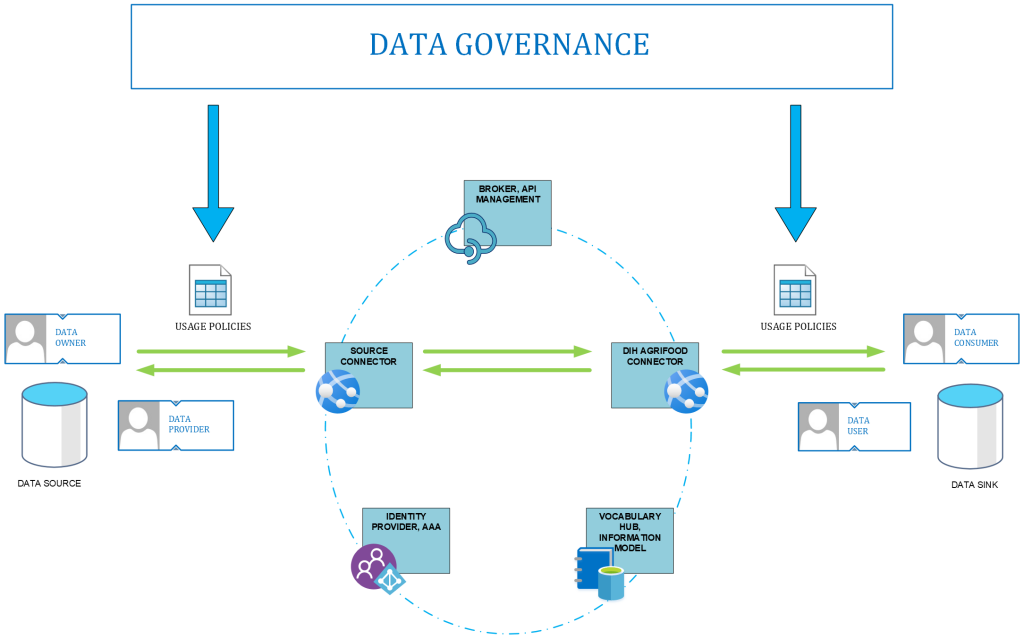
Identity management
As described above, Azure AD B2C is being used as an identity management solution. Azure AD B2C offers various sign-up and sign-in options for users: username, email, and phone sign-in. It has out-of-the-box support for federation with social providers like Facebook, LinkedIn, or Twitter. Azure AD B2C supports external identity providers - it can federate with standard identity protocols like OAuth 2.0 and OpenID Connect.
API Market service
As described above, API market service is customized Azure API management service, where data users could see the documentation for available datasets and their respective APIs.
Azure API Management is made up of an API gateway and a developer portal. These components are Azure-hosted.
The API gateway is the endpoint that:
- Accepts API calls and routes them to appropriate backends
- Verifies API keys and other credentials presented with requests
- Enforces usage quotas and rate limits
- Transforms requests and responses specified in policy statements
- Caches responses to improve response latency and minimize the load on backend services
- Emits logs, metrics, and traces for monitoring, reporting, and troubleshooting
The Developer portal is an automatically generated, fully customizable website with the documentation of your APIs. Developers use the open-source developer portal to discover the APIs, onboard to use them, and learn how to consume them in applications. Using the developer portal, developers can:
- Read API documentation
- Call an API via the interactive console
- Create an account and subscribe to get API keys
- Access analytics on their own usage
- Download API definitions
- Manage API keys
API authentication type is simple (API key). Example of a REST API usage is shown figure below:
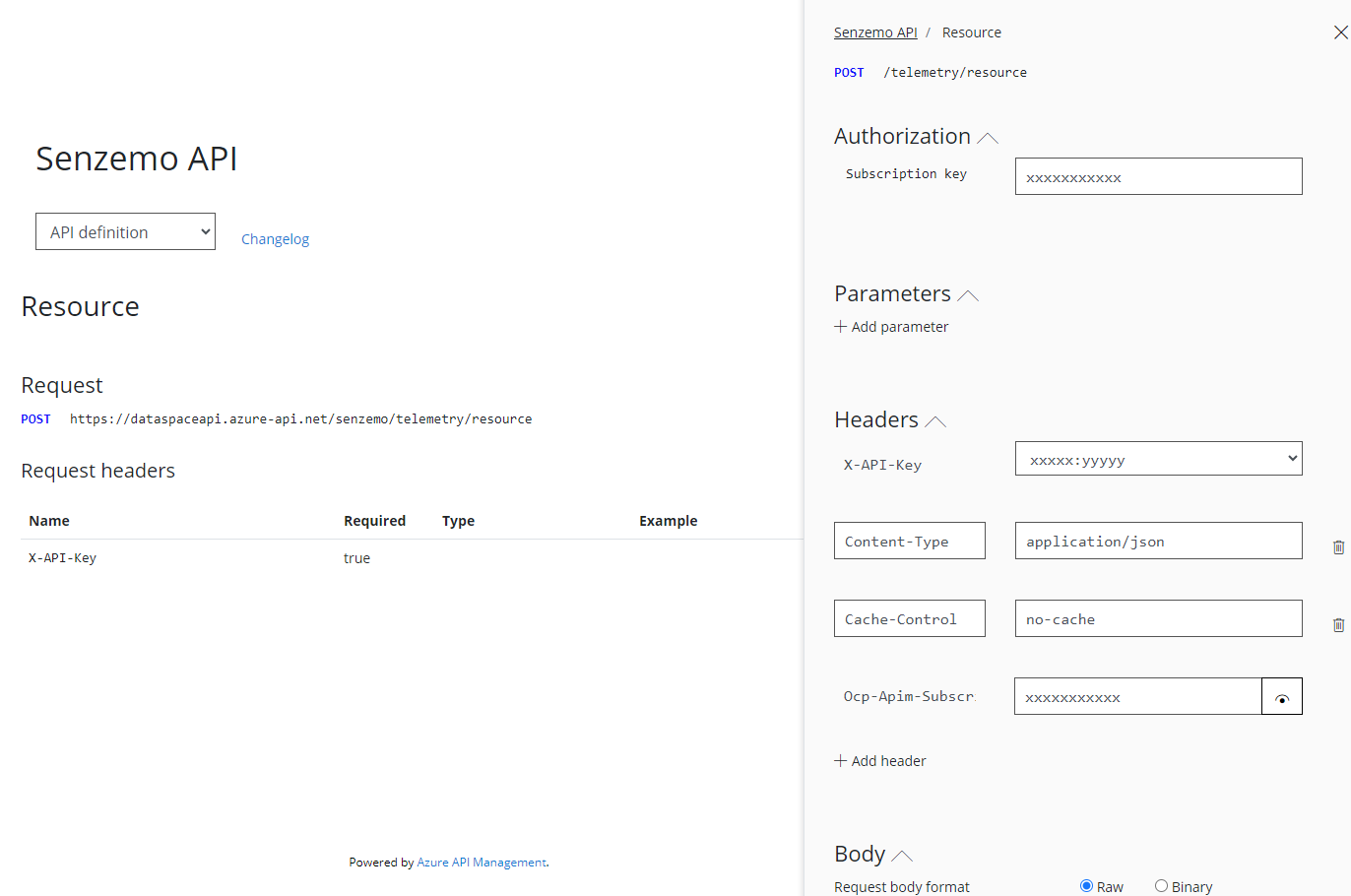
DIH Agrifood IDSA Connector
The IDSA compliant "part" of ITC data space will be made of two IDSA v6 connectors (provider and consumer), CA (Certificate Authority), and Omejdn DAPS. Schematics of the connector’s data model (taken from IDSA v6 documentation) are shown in figure on the right:
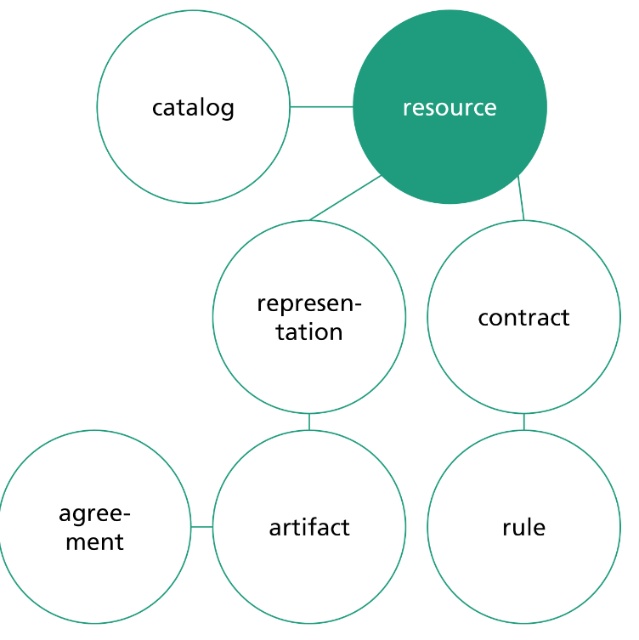
An overview of available endpoints of a connectors REST API is shown below:
Details of offered resources by methods and endpoint of the respective API will be decided before end of year 2023. One example of offered resources is shown below:
